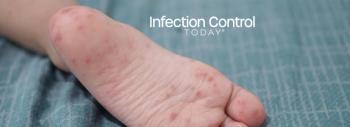
Study Reveals New Approach for Stopping Herpes Infections
Researchers at Albert Einstein College of Medicine of Yeshiva University have discovered a novel strategy for preventing infections due to the highly common herpes simplex viruses, the microbes responsible for causing genital herpes (herpes simplex virus 2) and cold sores (herpes simplex virus 1). The finding, published online by the FASEB Journal, could lead to new drugs for treating or suppressing herpes virus infections.
Â
"We've essentially identified the molecular "key" that herpes viruses use to penetrate cell membranes and infect cells of the human body," says Betsy Herold, MD, professor of pediatrics (infectious diseases), of microbiology and immunology and of obstetrics and gynecology and women's health at Einstein and attending physician of pediatrics, The Children's Hospital at Montefiore.
Â
Herpes viruses are known to infect skin cells as well as cells lining the cervix and the genital tract. A 2006 JAMA study estimates that nearly 60 percent of U.S. men and women between the ages of 14 and 49 carry the HSV-1 virus. The CDC estimates that about 1 in 6 Americans (16.2 percent) between 14 and 49 are infected with herpes simplex virus type 2 (HSV-2), according to a 2010 national health survey. HSV-2 is a lifelong and incurable infection that can cause recurrent and painful genital sores and can make those infected with the virus two-to-three times more likely to acquire HIV, the virus that causes AIDS.
Â
Herold and her colleagues had previously shown that infection by the herpes viruses depends on calcium released within the cells. In this study, they found that calcium release occurs because the viruses activate a critical cell-signaling molecule called Akt at the cell membrane.
Â
As part of their investigation of Akt's role in herpes infections, the researchers took laboratory cultures of those human cell types and mixed them for 15 minutes with four different drugs known to inhibit Akt. The cells were then exposed for one hour to herpes simplex virus 2. All four drugs significantly inhibited herpes virus infection in each of the cell types. By contrast, cells not pretreated with the Akt inhibitors were readily infected on exposure to the virus.
Â
"For people infected with herpes, the drug acyclovir helps prevent herpes outbreaks from recurring and lowers the risk of transmitting the infection to others," says Herold. "But some people have herpes infections that don't respond to acyclovir, and unfortunately there is no effective vaccine. So new approaches for suppressing and treating herpes infections are badly needed, and our findings indicate that inhibiting Akt should be a useful therapeutic strategy to pursue."
 Â
The paper "HSV activates Akt to trigger calcium release and promote viral entry: novel candidate target for treatment and suppression" was published online by The FASEB Journal. In addition to Dr. Herold, other authors of the paper (all of them at Einstein) were lead author Natalia Cheshenko, PhD, Janie B. Trepanier, PhD, Martha Stefanidou, Niall Buckley, Pablo Gonzalez and William Jacobs, Jr., PhD. The research was supported by grants from the National Institutes of Health (AI-061679) and the Center for AIDS Research at Einstein and Montefiore Medical Center (AI-51519).
Source: Albert Einstein College of Medicine
Â
Newsletter
Stay prepared and protected with Infection Control Today's newsletter, delivering essential updates, best practices, and expert insights for infection preventionists.






